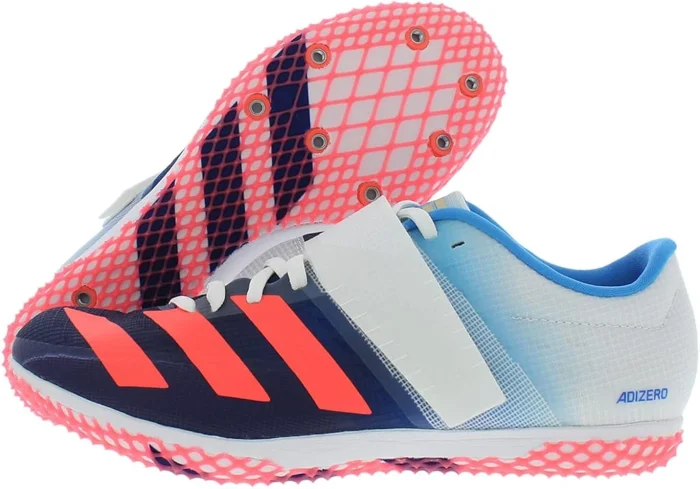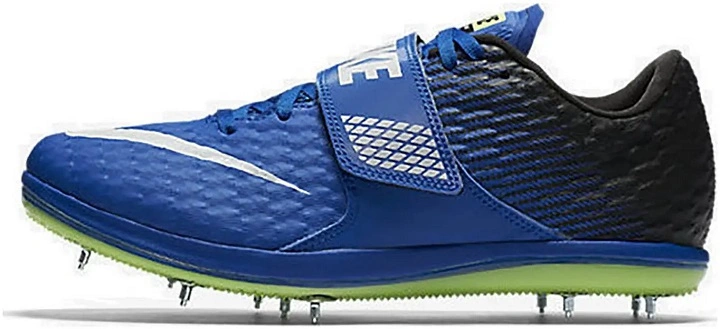High jump shoes are specialized athletic footwear designed to enhance performance. These shoes also provide the stability, traction and support needed for the high jump event. These shoes are essential for athletes. Who wants to maximize their jumping potential and minimize the risk of injury. Here’s a detailed look at what high jump shoes are and their features. Also look at how they improve performance.
What Are High Jump Shoes?

High jump shoes are track and field footwear specifically engineered for high jumpers. Unlike regular running shoes they feature a combination of spikes, grip and support. Which is tailored to the unique demands of this event. These shoes help athletes achieve the proper technique and generate speed on the approach. Also these shoes maintain balance during takeoff.
Key Features of High Jump Shoes
- Spikes for Traction: High jump shoes typically have a combination of forefoot and heel spikes to provide maximum grip during the approach and takeoff.
- Stiff Soles: The soles are designed to be rigid, ensuring energy transfer from the foot to the jump.
- Ankle Support: Many high jump shoes offer added ankle support to protect against injuries during takeoff and landing.
- Asymmetrical Design: Some shoes have an asymmetrical sole design to accommodate the curved approach path used in the high jump.
- Lightweight Construction: The materials are lightweight, allowing athletes to maintain speed without added weight.
Benefits of Using High Jump Shoes

- Enhanced Traction: The spikes provide superior grip on the track, ensuring a controlled and powerful approach.
- Improved Stability: The design of the shoes helps maintain balance during the curved approach and takeoff.
- Maximized Energy Transfer: Stiff soles help direct energy from the approach into a powerful jump.
- Reduced Risk of Injury: Features like ankle support and proper grip minimize the risk of slips or awkward landings.
- Tailored for Technique: These shoes are specifically built to complement the high jump technique, such as the Fosbury Flop.
Also Read: Motus Strength
How to Choose the Right High Jump Shoes
- Fit: Ensure the shoes fit snugly but comfortably. A proper fit minimizes movement within the shoe and maximizes control.
- Spikes: Look for shoes with durable spikes that provide optimal traction on your competition surface.
- Ankle Support: If you’re prone to ankle injuries, prioritize shoes with extra support.
- Weight: Choose lightweight shoes to maintain speed during your approach.
- Brand and Model: Popular brands like Nike, Adidas, and ASICS offer high jump shoes with specific features tailored to different preferences.
Top High Jump Shoes in the Market
- Nike Zoom High Jump Elite: Known for its lightweight design, excellent traction, and responsive sole.
- Adidas Adizero HJ: Features an asymmetrical sole for better performance on curved approaches.
- ASICS High Jump Pro: Offers a balanced combination of comfort, grip, and support.
- Puma EvoSpeed High Jump: Lightweight and designed for speed and explosive jumps.
Tips for Using High Jump Shoes
- Break Them In: Wear your shoes during practice sessions before using them in competition.
- Keep Them Clean: Regularly clean the spikes and soles to maintain optimal grip.
- Replace Worn Spikes: Ensure spikes are in good condition for maximum traction.
- Store Properly: Keep your shoes in a cool, dry place to prevent material degradation.
FAQs About High Jump Shoes
Do I need high jump shoes for practice?
While not mandatory, using high jump shoes during practice helps you get accustomed to their feel and performance benefits.
Can I use regular track spikes for high jumping?
Regular track spikes can be used in practice, but high jump shoes provide the specialized support and traction necessary for optimal performance in competition.
How often should I replace my high jump shoes?
Replace them when the soles or spikes show significant wear or if the shoes no longer provide proper support.
Are high jump shoes expensive?
High jump shoes typically cost between $100-$200, depending on the brand and features.
What’s the difference between high jump shoes and other track shoes?
High jump shoes have a unique design tailored for takeoff and curved approaches, including heel spikes and stiff soles for stability and energy transfer.







